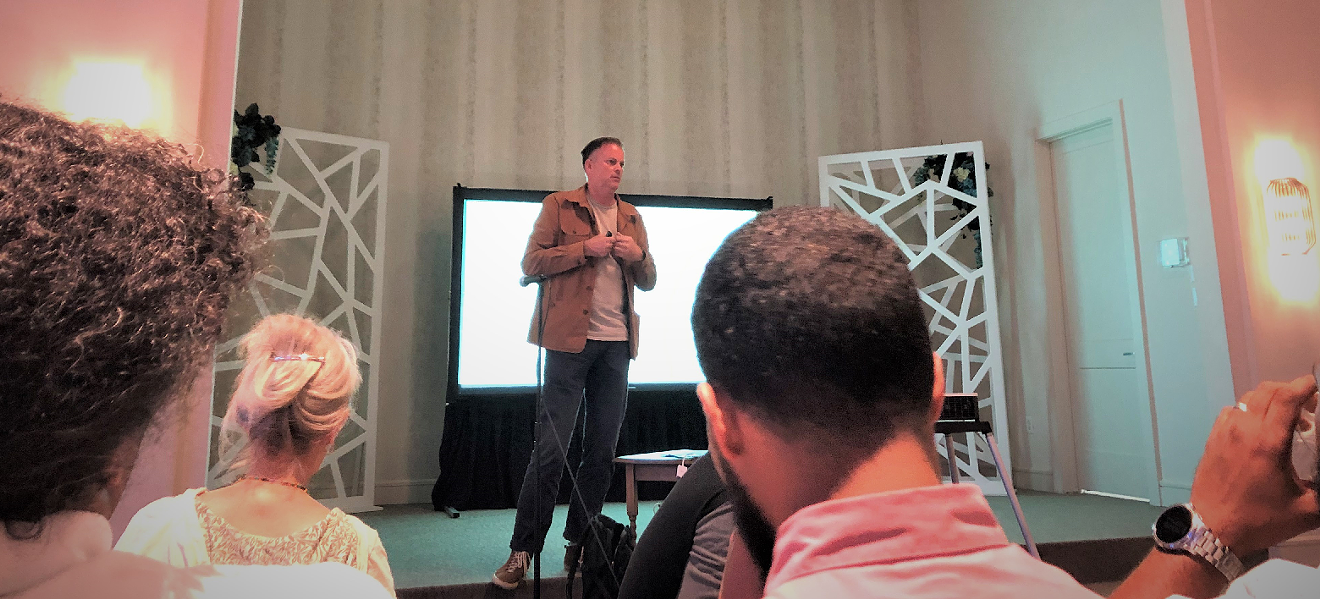Last week in an otherwise long, dry, near-somnambulant session of wonkery at a meeting of a group called Heritage Oak Cliff, a single meager reference to the ideas of the four former elected officials was enough to elicit raucous applause. Brent Brown, president and CEO of the Trinity Conservancy, the group developing the new Simmons Park on the banks of the Trinity River between downtown and Oak Cliff, was speaking to about 50 people in a cunningly repurposed church sanctuary, now part of a boutique hotel, of course.
Brown, who had been trudging through some fairly dusty detail, paused to utter what sounded like an unplanned aside: “And today,” he said, “we are all thankful, I believe, that there will not be a road in the river.” It was a reference to the once and former Trinity River toll road project, killed in large part through the efforts of the four.
The house blew up. I’m a minister’s son. I couldn’t help looking around at the explosion of happiness spontaneously evinced by those few words and wonder if anybody ever got that much bounce out of the house back when it was still a church.
This is what really struck me the other evening in the converted church, which is now called Chijmes with a j, and you’ll have to ask someone else about the j, because I have no idea. I have been watching, listening and talking to Brent Brown about that park he wants to do for a couple years. That concept has definitely undergone significant change lately.
The other evening I definitely could see the ideas of the four at work changing Brown’s thinking about his park. That’s a big deal, because as recently as a year ago the park concept was still one big middle finger to the four.
In the course of their 20-year battle to kill the toll road, the four were fighting to heal the city with nature. There were always a few people on the other side of the toll road fight who understood what the four were saying and even shared some of their ideas. One who comes to mind is Gail Thomas, former director of The Dallas Institute, a think tank.
“We have got to welcome the flood.” — Brent Brown
tweet this
But for most of the Dallas rich elite pushing the toll road, the notion of nature healing the city was what you might expect if a bunch of delusional hippies smoked too much weed and then started mercilessly running their mouths. The Dallas elite wanted their own derivative version of big, glamorous high-wire acts like suspension bridges built over spaces where there was nothing to suspend over, speaking of spoiled brat delusions. I always wanted to say to them, “You know, it’s not a real high-wire act if you do it on your bed.”
Brown is an architect with a reputation for original thinking and effectiveness, especially in the area of connecting poor and modest communities with major new development. But as recently as a year and a half ago, his depiction of the park on the river downtown was still all pergolas, fountains and fake landscaping —certainly a reflection what his rich Park Cities patrons wanted him to build.
In stark contrast last week in Oak Cliff, the park Brown described sounded like something Laura Miller and Angela Hunt had co-designed: “We have got to welcome the flood,” Brown told the group in Oak Cliff last week, meaning whatever gets built on the river must be designed to accommodate cyclical inundation.
He immediately qualified that idea by conceding it runs counter to some of the early expectations for his park. “‘Welcome the flood?’” he said, quoting himself in what sounded distinctly like a recounting of difficult conversations he must be having elsewhere. “What in the hell are you talking about?”
But everybody at Chijmes with a j knew exactly what he was talking about. Oak Cliff people know the river floods. Most of them cross it every day. Duh. Must be somebody else having trouble with the concept.
From former Mayor Miller’s Balanced Vision Plan adopted in 2003 to former council member Hunt’s more recent concept of re-wilding, all of the ideas on that side of the dial have been about welcoming, enabling and celebrating the natural rhythms of the river. It has always been the wealthy sponsors of the park plan who wanted to bring a carpet-bagger architect from New York to town to do something fancy. They wanted to create a thing that would look like New York Central Park got Disney World pregnant and they had a park. But now Brown wants to welcome the flood.
“The flooding and the management of this system, the whole watershed,” Brown said, “provides a functional programmatic element to the park.”
Oh, well, wait, that sounds very familiar. In fact that sounds almost like a quote. Functional programmatic element: that’s federal bureau-speak. Nobody has functional programmatic elements outside of the federal bureaucracy. You ever have a functional programmatic element? No. That boy’s been talking to the U.S. Army Corps of Engineers.
The Corps is in charge of rivers, period. Their mission is to keep us from flooding ourselves to death by putting stupid stuff in rivers like subdivisions. Last April there was a mini-brouhaha when a Dallas city committee gave the Corps its first peek at plans for Baby Disney Park on the Trinity. Nobody would tell me exactly, but I guess the Corps must have said something to the effect of, “Not my baby, baby.”
I spoke last week with Dallas landscape architect Kevin Sloan, who has worked with the Corps on a number of projects. He explained to me that the Corps of Engineers process for something like this may be glacial — often in the order of 10 to 20 years — but, like a glacier, you can’t really push it back uphill.
Miller’s Balanced Vision Plan wasn’t a suggestion, Sloan explained. It was a set of ideas, concepts and approvals painstakingly codified into documents, all of which now have important legal meaning.
“The status of the Balanced Vision Plan as far as the Army Corps of Engineers cares,” Sloan said, “is that they have approved a set of construction drawings. These are elaborate technical drawings that ultimately lead to sending them out for published bid and that whole process.”
The glacial pace of that process, he said, is measured not in inches but in percentages of completion: “The Corps of Engineers approved a 30% complete set of construction drawings for the Balanced Vision Plan. The next time the Corps of Engineers hears anything about the Trinity River, they expect that conversation to advance the construction drawings from 30% complete to 31% complete.”
The problem with Baby Disney, as presented to the Corps 18 months ago, must have been that it didn’t pick up at 30%. It picked up in left field.
“When somebody comes in with a new enthusiasm,” Sloan said, “the Corps of Engineers looks at it and says, ‘This doesn’t look like the last 30% we just spent years reviewing and approving.’ To completely truncate that process with something entirely new, that’s called starting over. That’s not called 31%.”

Members of Heritage Oak Cliff gathered last week in what was once a church, now repurposed as part of Chijmes, a boutique hotel at 975 N. Zang in Oak Cliff.
Jim Schutze
By the way, Sloan speaks very respectfully of Brown, and Brown speaks respectfully of Sloan. Neither one of them describes changes in the concept of the new park invidiously, and I’m glad, because that’s my job."The next time the Corps of Engineers hears anything about the Trinity River, they expect that conversation to advance the construction drawings from 30% complete to 31% complete.” — Kevin Sloan
tweet this
In speaking to me, Brown has always characterized the evolution of ideas for the park as an “iterative process.” I’ve never been totally sure what that is. I think it may be related to functional programmatic elements. But it doesn’t sound like a bad thing.
Sloan, for his part, sounded thrilled when I recounted some of what I had heard the night before at Chijmes. Sloan said he thinks an exciting synergy may be blooming around a larger understanding of the whole Dallas watershed. He notes that his own school, the University of Texas at Arlington College of Architecture, has a new dean, Adrian Parr, an Australian-born philosopher and cultural critic who has served as the water chair of UNESCO, the United Nations Educational, Scientific and Cultural Organization.
Parr has put together a conference for next Aug. 16 that will bring scientists and academics from around the world to discuss urban watershed systems and sustainability. Sloan thinks some of that may rub off.
So I will leave it to the genteel people of the professions to be all generous and decorous and dignified about everything with each other, leaving me to revert to my own tendencies, which, in talking about the obvious evolution of plans for the park, fall more in the line of nanna-na-na. A little bit. Please allow me to get out just one quick nanna-na-na so I won’t have a brain aneurysm.
Nanna. Na. Na.
There. I feel better now.












